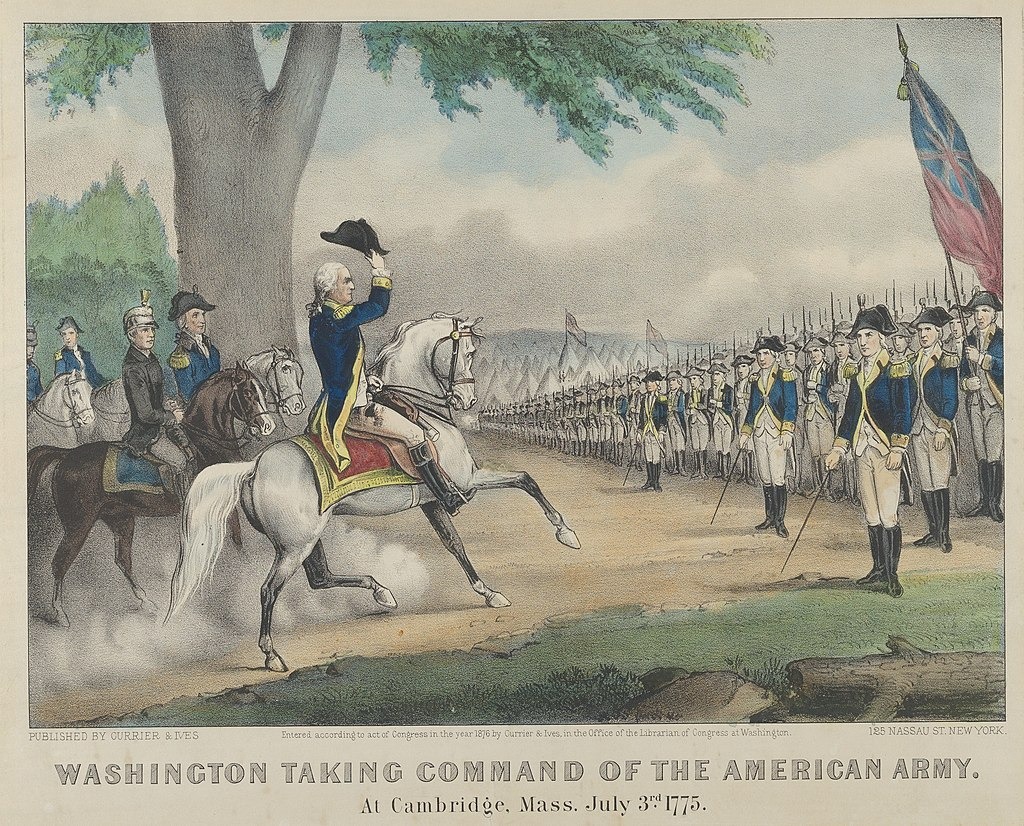CONSTITUTION PARTY NATIONAL CHAIRMAN
Justin Magill
Road to Independence Dateline: 17 June 1775, Philadelphia, Pennsylvania
George Washington was chosen this day to lead the Continental forces against the British.
Washington’s selection as the Commander & Chief was not a foregone conclusion and there were several others who expected to receive the appointment. However, George Washington’s nomination was unanimously approved by the Continental Congress. A sum of $500 per month was established to pay the Commander & Chief, but Washington refused pay, asking only that his expenses be reimbursed.
Washington did not seek this position, but he was one of the few men suited for this position; both in military experience and in his place and position as a wealthy Virginia leader. His selection to lead the colonial army, let everyone know that the colonies were behind Massachusetts in its struggle with the king. His steady leadership through the war brought about the impossible victory over the world’s greatest military of the time.
George Washington received his commission as General and Commander and Chief on June 19, 1775, and resigned it on December 23, 1783 after the war. His willingness to resign from such a powerful position has resonated with Americans for generations.
See the words of the commission below from the American Battlefield Trust.
The Continental Congress appoints George Washington as Commander and Chief of the Continental Army:
Members of Congress convened:
The delegates of the United Colonies of New Hampshire, Massachusetts Bay, Rhode Island, Connecticut, New York, New Jersey, Pennsylvania, New Castle Kent and Sussex on Delaware, Maryland, Virginia, North Carolina, and South Carolina
To George Washington Esquire
We reposing especial trust and confidence in your patriotism, conduct and fidelity Do by these presents constitute and appoint you to be General and Commander in chief of the army of the United Colonies and of all the forces raised or to be raised by them and of all others who shall voluntarily offer their service and join the said army for the defence of American Liberty and for repelling every hostile invasion thereof And you are hereby vested with full power and authority to act as you shall think for the good and Welfare of the service.
And we do hereby strictly charge and require all officers and soldiers under your command to be obedient to your orders & diligent in the exercise of their several duties. And we do also enjoin and require you to be careful in executing the great trust reposed in you, by causing strict discipline and order to be observed in the army and that the soldiers are duly exercised and provided with all convenient necessaries.
And you are to regulate your conduct in every respect by the rules and discipline of war (as herewith given you) and punctually to observe and follow such orders and directions from time to time as you shall receive from this or a future Congress of the said United Colonies or a committee of Congress for that purpose appointed.
This Commission to continue in force until revoked by this or a future Congress.
By order of the Congress,
John Hancock, President
Learn more: https://www.battlefields.org/learn/primary-sources/washingtons-commission



